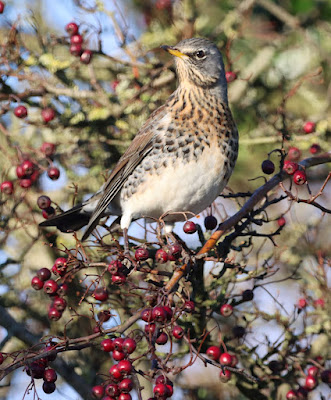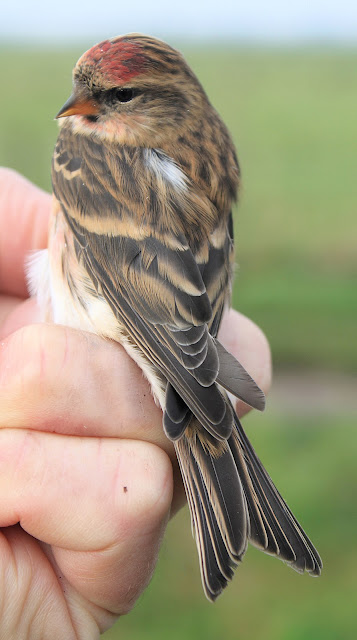“Minus 4° - potential for ice on roads” read the dashboard. I’d already decided that sunny and dry Wednesday would be a birding day of warm fingers, and hopefully one that might include a few photographs. I set off into the frosty landscape and headed for the A588 towards Lancaster.
Pink-footed Geese were on the move high, south and east, to escape the inevitable guns, although a couple of hundred had stopped off in a relatively safe field bounded by a sparse hedgerow that gave a semblance of peace & quiet.
Each year becomes more difficult to both to see and to hear our wild geese on the ground as the disturbance to traditional haunts becomes more intense and threatening to feeding geese through "development", traffic - large & small, walkers, shooters, and yes, birdwatchers.
Pink-footed Geese
Approaching Lapwing Lodge and glancing left I couldn’t help but see a large raptor moving very slowly, almost hovering above a reed-fringed ditch that runs north towards the coast. The deep-v profile became more obvious upon closer approach, as did the size. But for the following traffic on the dangerous fast bend, a stop would have confirmed a Marsh Harrier, probably the same bird that has frequented this locality for several weeks now.
The Marsh Harrier is no longer a spring and autumn migrant bird to our Fylde coast: it is now a year round resident that can be seen during the winter months, albeit in smaller numbers than at the peak the species’ autumn migration August to October.
A stop at Gulf Lane found seven or eight Snipe hiding in the furrows of a ploughed field that has yet to dry out from the rains of August through to November. At the approaching car a few “snipped” away to hide elsewhere. A number of Lapwings were easier to spot than the crouching and immobile Snipe using their cryptic plumage to best advantage.
More Lapwings graced the field from here all the way to Braides Farm, Cockerham where more distant birds gave approximate counts of 490 Lapwing, 150+ Golden Plover, 80 Curlew and 40 Redshank. A single Pied Wagtail pottered along the pooled track.
This has been a poor autumn for seeing Fieldfares but I caught up with some today on the road to Cockerham Abbey where they were feasting on the now dwindling hawthorn berries. Also a few Blackbirds and one or two Redwings.
Fieldfare
Hawthorn
Fieldfare
A single Kestrel hunted alongside the road and spent time loitering at lookout spots in the hope of spotting a small mammal meal. At minus 4 degrees a Kestrel needs to spend more time in search of food.
Kestrel
Kestrel
Here's that familiar song Baby It's Cold Outside. A new version dedicated to people struggling to pay gas & electric bills and to that eminent scientist recently in the news for expressing very unpleasant views.
Enjoy
the rest of your week good people and then come back soon to Another
Bird Blog.
Linking today to Eileen's Saturday.






































































.jpg)













